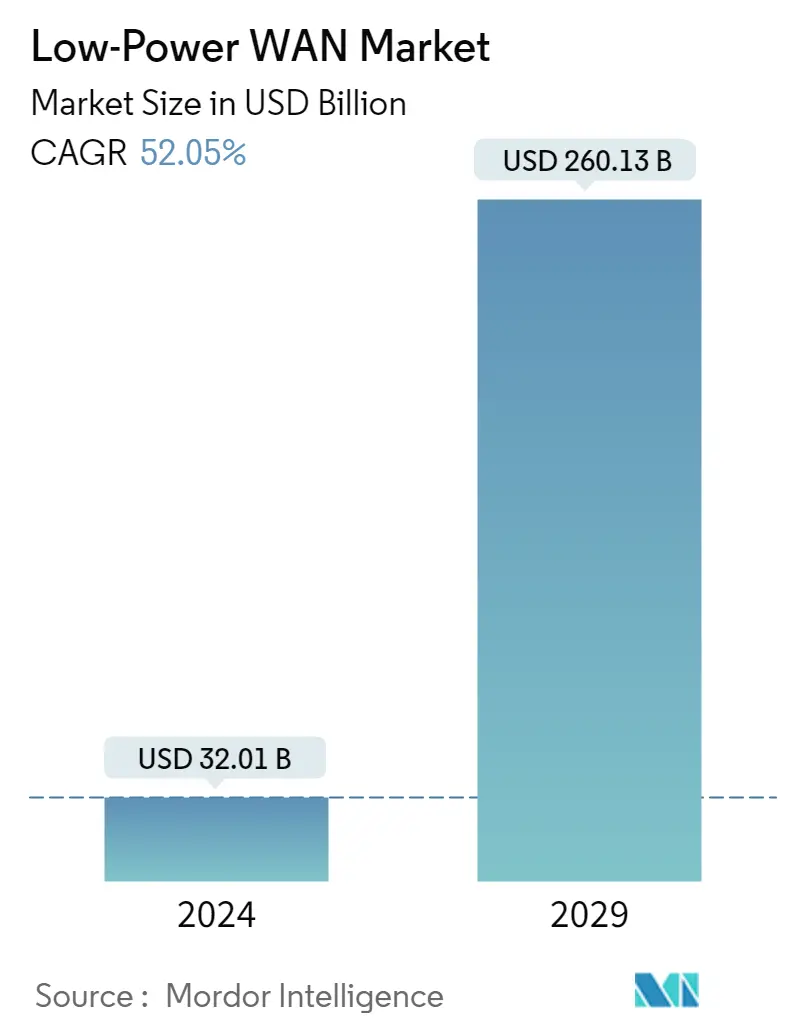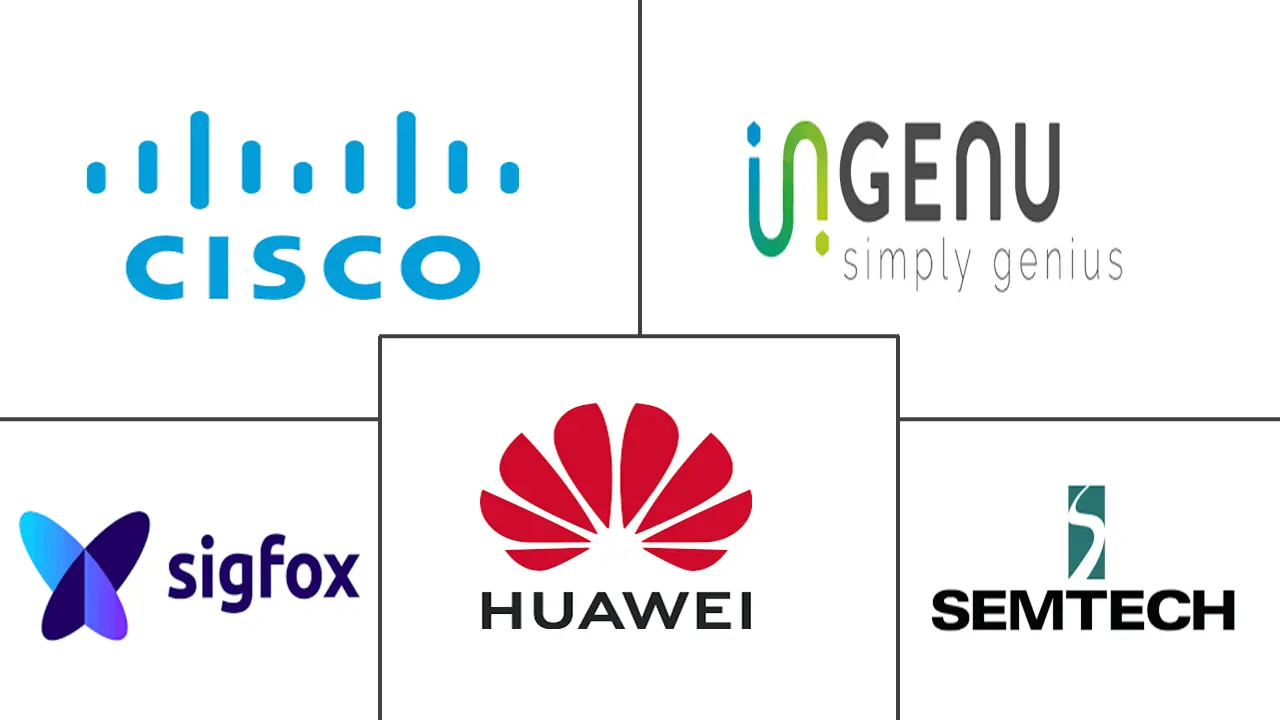Market Size of Low-Power WAN Industry

| Study Period | 2019 - 2029 |
| Market Size (2024) | USD 32.01 Billion |
| Market Size (2029) | USD 260.13 Billion |
| CAGR (2024 - 2029) | 52.05 % |
| Fastest Growing Market | Asia Pacific |
| Largest Market | North America |
Major Players
*Disclaimer: Major Players sorted in no particular order |
Need a report that reflects how COVID-19 has impacted this market and its growth?
Low-Power WAN Market Analysis
The Low-Power WAN Market size is estimated at USD 32.01 billion in 2024, and is expected to reach USD 260.13 billion by 2029, growing at a CAGR of 52.05% during the forecast period (2024-2029).
A low-power WAN (LPWAN) wireless wide area network connects low-bandwidth, battery-operated devices at low bit rates over large distances.
- Over the forecast period, it is predicted that the growing need for low-power wide-area connectivity in the Internet of Things (IoT) applications will propel the growth of the entire market.
- Applying the abovementioned capabilities increases productivity twofold and aids in tracking crop development. In this industry, LPWAN facilitates the transmission of small amounts of data across long distances, which is anticipated to positively affect market growth throughout the forecast period.
- Fleet management, GPS tracking, smart meters, smart grid management, home automation, waste management, process monitoring and control, and temperature monitoring are just a few of the critical applications of LPWAN.
- Future coverage and scalability, technological coexistence, and real-time communication are only a few of the issues with this technology that could hinder its widespread adoption and commercialization. In addition, network security, which is less reliable than transmitting data back to endpoints, might also be vulnerable to interference.
- The most helpful technology for assisting medical diagnosis and treatment during COVID-19 was 5G, and the trend is still going strong today. Since the network's high capacity and low latency allow the transmission of high-definition footage for processing and analytics, the healthcare sector, for example, has profited the most from deploying 5G. With this tool, healthcare providers can recognize patients acting differently than average, having just undergone an incident like a fall, or becoming a danger to themselves or others.
